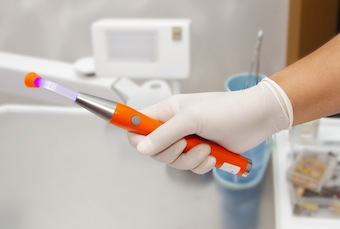Can You Light Cure Too Much?
Light cure composite materials have produced a radical shift in dentistry over the past 40 years; it’s a shift I have lived in while graduating in 1980. One of the constants I believed in, like the speed of light, was that it was not possible to provide too much light to a light cured material. As it turns out, I might have been wrong.
In researching composite curing I came across a 2006 study that looked at the thickness of the oxygen inhibited layer with varying amounts of light applied to the adhesive layer resin (the bonding resin) under direct fill composites.
In this study, curing the adhesive resin layer longer than recommended by the manufacturer actually resulted in a higher degree of conversion and a thinner oxygen inhibited layer.
Curing the adhesive layer for 30 seconds or more (curing time was tested to 60 seconds) thinned the oxygen inhibited layer enough that defects were observed between the adhesive layer and the composite resin. A thick oxygen inhibited layer produced better bond to the curing composite.
So what’s the take home argument? On an adhesive layer of bonding resin under a direct composite, a lot of light might be too much. Cure the bonding resin under your composites for the amount of time recommended by the manufacturer, not more.
Reference:
J Biomed Mater Res B Appl Biomater. 2006 Jul;78(1):115-23. Effect of light-cure time of adhesive resin on the thickness of the oxygen-inhibited layer and the microtensile bond strength to dentin. Kim JS1, Choi YH, Cho BH, Son HH, Lee IB, Um CM, Kim CK.
FOUNDATIONS MEMBERSHIP
New Dentist?
This Program Is Just for You!
Spear’s Foundations membership is specifically for dentists in their first 0–5 years of practice. For less than you charge for one crown, get a full year of training that applies to your daily work, including guidance from trusted faculty and support from a community of peers — all for only $599 a year.

By: Gary DeWood
Date: April 9, 2014
Featured Digest articles
Insights and advice from Spear Faculty and industry experts



